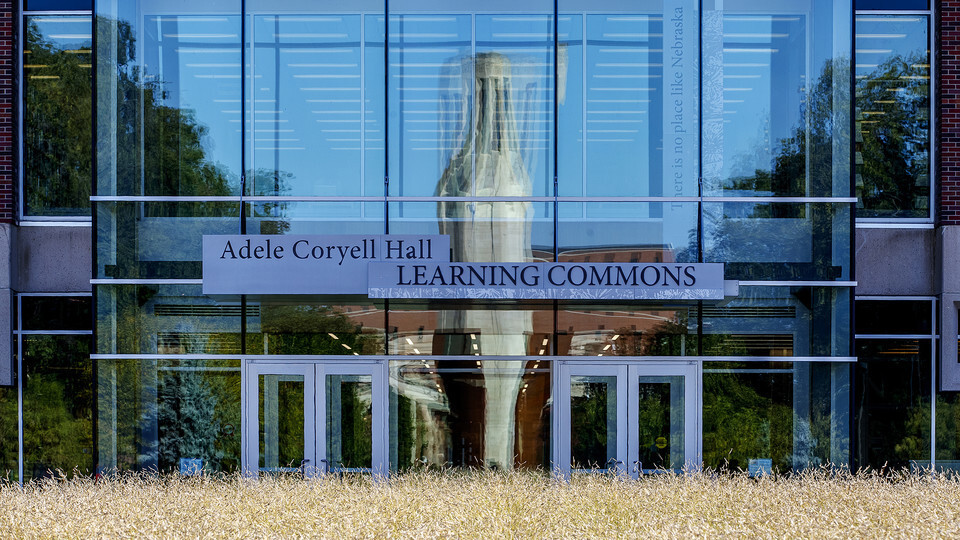
As the University of Nebraska–Lincoln moves forward with diversity planning and a new commitment to action, Nebraska Today is sitting down with university leaders to explore how inclusive excellence is being folded into day-to-day campus activities.
Since 2019, the university’s Office of Diversity and Inclusion has worked directly with institutional leaders in multiple ways, including through the Council of Inclusive Excellence and Diversity. Intended to connect colleges, primary campus units and ODI, the council is led by Nkenge Friday, assistant vice chancellor for strategic initiatives, with representation from across the institution.
The work of the council has been pivotal in guiding diversity, equity and inclusion plans university-wide. And, momentum realized through the council is being featured in this Q&A series.
Today, we’re continuing the series with the University Libraries, talking with Claire Stewart, dean of the University Libraries, and Charlene Maxey-Harris, associate dean and tenure associate professor of University Libraries.
What is the state of diversity, equity and inclusion in the University Libraries?
The University Libraries has been dedicating time and resources to diversity efforts for more than 20 years. The dominant structure of knowledge for our systems and practice was built on a white cultural framework. Therefore, it is critical that other voices and knowledge are incorporated into the library and information profession and the work we do. The libraries has an active Diversity and Inclusion Committee with staff and faculty volunteers under the long-time leadership of Charlene Maxey-Harris, associate dean of libraries, and recently retired staff development officer, Tom McFarland. Many of our efforts are documented in reports, recruitment and retention strategies, staff and faculty training, programs and events, and in scholarly and creative research activities of individual libraries faculty and staff. The libraries has a high level of awareness and is working intensively to translate awareness to action across the organization.
Diversity and inclusion work is an ongoing active process and the libraries’ DEI efforts are woven throughout its 2020-2022 strategic plan. A few examples of DEI goals that are embedded in the libraries overall strategic goals include:
- promote organizational effectiveness (Strategic plan, Objective 6), “implement organizational changes that support the equitable recruitment, development, and advancement of all Libraries staff and faculty…”
- accelerating open scholarship (Strategic plan, Objective 2), adopt policies and strategies that facilitate and promote open and equitable access to information
- advance teaching & learning (Strategic plan, Objective 1), incorporate diverse resources and critical thinking practices into teaching curricula and assignments
- build a sustainable collections program (Strategic plan, Objective 5), develop collections that increases investment in underrepresented and missing voices to support research and learning
Are elements of the libraries’ DEI planning already being implemented?
The Diversity and Inclusion Committee will be leading focused conversations with libraries faculty and staff. We are offering DEI and management training opportunities through the Big Ten Academic Alliance for faculty and staff, including supporting attendance at the Racial Equity Institute. The libraries will be appointing a collections librarian to focus on addressing the gaps, silences, missing voices, and the underrepresented content and resources in our print and digital collections. Accessibility to content and collections continues to be a major concern, one that we share and are working to address with other BTAA libraries. Our Archives and Special Collections has begun outlining processing priorities, which included an emphasis on arranging and describing collections related to underrepresented and marginalized communities. In addition, guidelines for inclusive and conscientious metadata and description practices are being examined.
How are individuals in the libraries helping advance inclusive excellence?
We expect all faculty, staff, and units within the ibraries to articulate how their work can be reframed to support DEI. Our administration is offering resources, including a planned internal incentive grant program, to support new activities or projects to advance inclusive excellence within the libraries. In the Access Services area, for example, student employees are being trained with the goal of promoting inclusion in service delivery with TRUST training (Treat others with kindness, Respect differences, Understand mistakes happen, Speak up, Try, always try).
Interpreting inclusive excellence’s meaning is work being done by each library unit and individual to help us grow and evolve the organization. Activities that address antiracism, justice, truth and reckoning, equity, diversity, racial equity programs, actions, conversations, and behaviors can lead to programs, initiatives, removing barriers, and open conversations.
Is there a part of the plan that is most exciting to you and/or having a positive impact on the libraries?
We are most excited about embedding our plans into our daily work and the libraries’ reorganization. Our plan is alive in our conversations, our services, who we are serving, and in the challenge of engaging our community. The demographic information of the libraries’ faculty and staff really highlighted the missing representation and voices in our internal community. We are developing a deliberate recruitment plan to add those voices to our workplace while at the same time understanding and realizing that the workplace needs to be prepared to receive, foster, to be accepting of employees that may be different from themselves.







